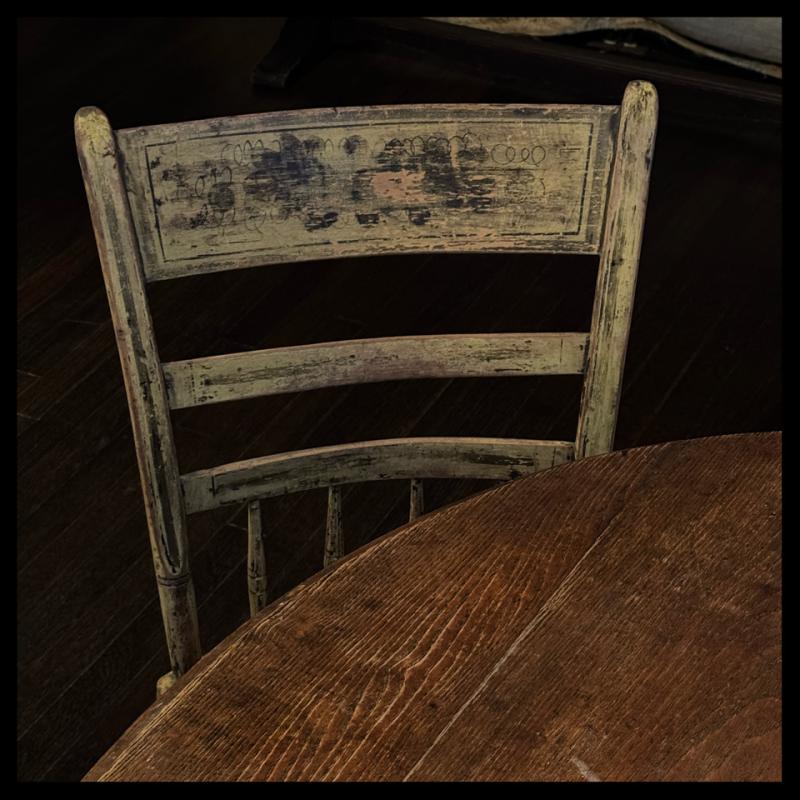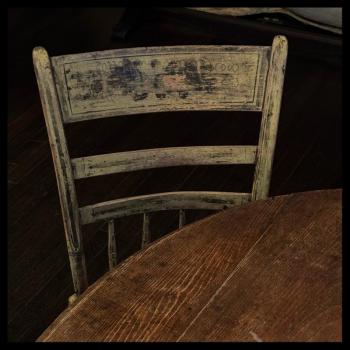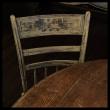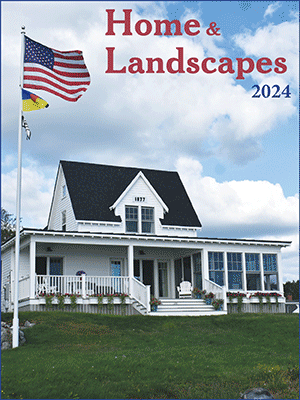Of Toast and Tables
There’s a poem by Poet Laureate Joy Harjo — “Perhaps the World Ends Here.” “The world begins at a kitchen table,” the poet writes.
In the middle of a winter storm in early February, as I sit at my generous kitchen table with a cup of hot tea, the lines of this poem settle silently around me like a blanket of snow, burying immediate concerns under a drift of memory. “The gifts of earth are bought and prepared, set on the table. So it has been since creation, and it will go on.”
This house in Maine is the first one I’ve lived in with room for a proper table. I love sitting here with a view of the water out one window, my sister’s cottage out another. I cherish the moments I have spent here with my children, their friends, our neighbors. But in the solitude of this particular morning, despite my irrational affection and gratitude for this particular table, the poem calls to mind another table entirely.
The kitchen table of my childhood — painted by my young mother a happy yellow, since faded to the color of butter — always seemed too diminutive to live up to our expectations for it. Four chairs barely fit around it. We weren’t fully grown, but still found ourselves positioning legs at odd angles and folding elbows awkwardly in laps in order to eat together. “Don’t lean on the table,” we were reprimanded, as if it might buckle under our collective weight at any time. It turns out we underestimated that table.
Looking back over fifty years of memory, the little table was always a banquet celebrating family — strewn with recipes written in my mother’s penmanship (of which she was proud), a Greek textbook she had been studying at night, clean laundry freshly taken from the clothesline and folded. Often a full cookie jar. Always a bowl of bread dough rising under a colorful kitchen towel. I had assumed that the inscription on my mother’s bread bowl was biblical —“Let me lie down Lord like a stone, let me rise up like new bread.” I learned later that those words were written by Tolstoy.
My mother’s bread is a story in its own right. Somewhere in the 1970s as Wonder Bread became the national staple for lunchbox sandwiches and late night snacks, my mother started baking bread. And from that moment, more often than not, bread became foundational to our family meals together. Bacon lettuce and tomato sandwiches. Poached egg in a hole. Cinnamon toast when we were sick. For a brief period we were enamored with fondue. For special occasions, instead of birthday cake, my mother might present a round loaf of Swedish Limpah or Jewish Rye bread, carefully noting the date and occasion for baking it in the tattered book of bread recipes she had inherited from her brother.
But truth be told, my mother’s bread did not need adornment. Several days a week for as long as I can remember, we would wake to the smell of warm loaves and would arrive at the table to thick slices of toast, which we ate slathered with butter and honey. Those mornings often called for a second or third slice — there was no rush from the table. And in that way, eating toast together at the kitchen table, we learned how to nurture one another in all the ways that nurture was needed.
We did homework at the kitchen table. Read books. Took note of current events and personal milestones. In the evenings, my father would pull out a deck of worn playing cards for a game of canasta and we would be back at the table. We might grumble that the torn corner of one card easily betrayed it as the two of hearts, but we never considered replacing the deck. There was an unspoken but shared recognition, I think, that my grandmother’s hands had held the same cards while teaching my father to play at their kitchen table in Iowa. That his grandparents had held those cards a generation earlier on their farm in Verona.
We moved away when we got older but kept coming back, eventually with someone in tow who would sit at the table with my parents discussing a future of which they would be a part. We’d arrive as planned for holidays or blow in unexpectedly with news or needs to be discussed. We pulled up a high chair when the first baby appeared and kept it there for the siblings and cousins and grandchildren who followed. We found a stool and tucked it in the corner to be available for the occasional visitor who might stop by. We had one last meal with my mom at that table. We return there to eat grilled cheese sandwiches with my father.
As I sit here on a winter morning that is calling for some effort at tidying up — at the very least I should put the cups in the cupboard and fold the tablecloth for another occasion — I grow dismissive of the thought. In fact, the more things that accumulate companionably on my table, I realize, the more joy it brings me. I have a deep affection for the box of fishing tackle my son has abandoned on one end of the table, for the half-finished puzzle, for the sketched drawing that is leaving a soft dust of pastel on the library book I will have to return at some point. For a dog-eared book of photographs by Nancy Rexroth, taken with a toy camera in one place but calling to mind her own childhood memories in another. For the jar of sourdough starter that is leaving a ring stain on the table’s wooden surface as I write.
I sit content with the knowledge that my kitchen table seems to always have the capacity for a meal at one end, no matter what else is going on at the other. I pull out my mother’s bread bowl. “Perhaps the world will end at the kitchen table, while we are laughing and crying, eating of the last sweet bite,” writes the poet. I’d be satisfied.
Toast
From “The One Recipe” podcast, which asks chefs around the world to share their go-to recipe and the story behind it, chef Stephen Satterfield’s take on toast worthy of my mother’s bread: “Good bread, toasted on a griddle or in a cast iron skillet over low to medium heat with a smear of butter and olive oil until nicely crisped on both sides. Slow down. Think of toast as a beginning not an end.”
























